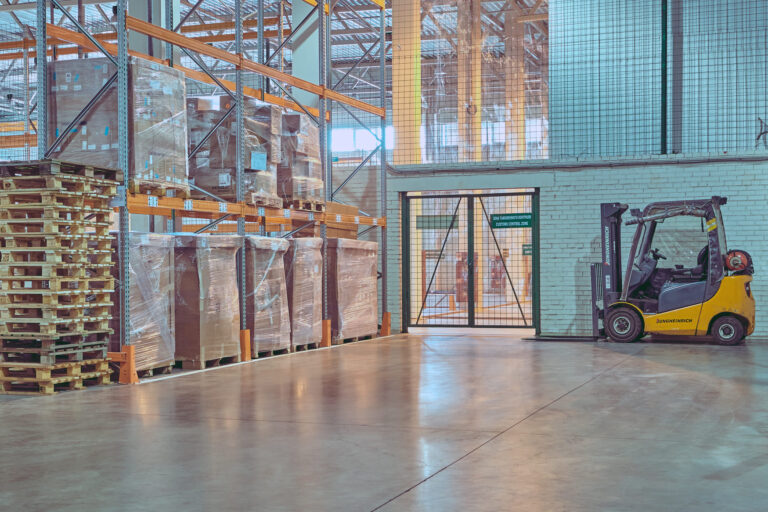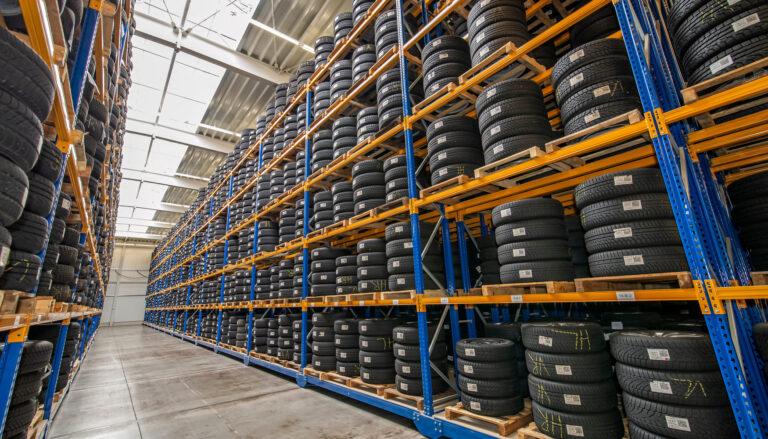4PL Logistics: The Ultimate Guide to Fourth-Party Logistics

Fourth-party logistics (4PL) refers to hiring a single partner to integrate and manage an entire supply chain. In practice, a 4PL provider acts as a strategic supply chain integrator, overseeing transportation, warehousing, inventory, and fulfillment on behalf of a company. In other words, businesses outsource their full logistics management to one expert who coordinates multiple 3PL (third-party) partners and advanced technologies. This allows companies to focus on core activities while the 4PL delivers end-to-end supply chain optimization.
What is 4PL (Fourth-Party Logistics)?
A 4PL provider is a strategic supply chain orchestrator that oversees end-to-end logistics operations, including:
1. Managing multiple 3PLs (warehousing, freight, last-mile delivery)
2. Integrating advanced technology (AI, IoT, real-time tracking)
3. Optimizing costs & efficiency through data-driven decisions
4. Providing risk management & compliance
4PL vs 3PL: Key Differences
| Feature | 3PL (Third-Party Logistics) | 4PL (Fourth-Party Logistics) |
| Scope | Executes specific logistics tasks | Manages the entire supply chain |
| Role | Tactical (e.g., warehousing, shipping) | Strategic oversight & optimization |
| Vendor Management | Works directly with shippers | Coordinates multiple 3PLs & carriers |
| Technology | Basic WMS & TMS | AI, predictive analytics, automation |
| Customization | Limited to logistics services | Tailored end-to-end solutions |
In summary, a 3PL executes logistics tasks, while a 4PL provides overall supply chain strategy and coordination. 4PL as the big umbrella that controls all moving parts (transportation, warehousing, etc.), bringing greater control and ownership to the customer. This broad perspective and single point-of-contact is the core difference between 3PL and 4PL logistics.
How 4PL Logistics Works (Process)
A Fourth-Party Logistics provider acts as the central orchestrator for a merchant’s supply chain, handling coordination across multiple logistics partners, including 3PLs. Here’s a step-by-step breakdown of how a 4PL logistics provider typically operates in collaboration with an eCommerce business:
1. Coordinating Transportation
The 4PL initiates the movement of goods, arranging transportation from the manufacturer to strategically chosen warehouses. These warehouses are often managed by third-party logistics providers who take over physical handling of products.
2. Managing Storage and Fulfillment
Once products arrive at the warehouse, the 3PL partner handles essential tasks like receiving stock, organizing inventory, picking items for orders, packing shipments, and preparing them for dispatch. The 4PL oversees this entire process to ensure efficiency and consistency.
3. Overseeing Inventory
Using integrated software solutions, the 4PL consolidates inventory data across all locations. This provides the merchant with a unified dashboard to track inventory levels, movement, and stock availability across the supply chain in real time.
4. Handling Order Delivery
For the final leg, the 4PL supervises delivery operations by coordinating with carriers or leveraging the 3PL’s shipping network. This ensures timely and accurate delivery to end customers, closing the loop in the fulfillment process.
Each step leverages technology and data. The 4PL tracks shipments in real time, uses predictive analytics to avoid delays, and continuously refines the supply chain. By outsourcing all these functions to a 4PL, a business gains a single point of accountability for transportation, warehousing, inventory, and delivery.
Key Benefits of 4PL Logistics Services
Outsourcing to a 4PL delivers several strategic advantages over traditional models:
1. End-to-End Supply Chain Visibility
A 4PL provider integrates data from all logistics partners, offering real-time tracking, predictive analytics, and performance insights. This eliminates blind spots and improves decision-making.
2. Cost Savings & Efficiency
By consolidating shipments, optimizing routes, and streamlining operations, fourth-party logistics (4PL) providers can help businesses achieve significant cost reductions. For example, a study found that switching to a 4PL model led to logistics cost savings of approximately 25% in the first month alone.
3. Access to Cutting-Edge Technology
4PLs invest in AI-driven demand forecasting, IoT sensors, and blockchain for secure transactions—tools most businesses can’t afford independently.
4. Scalability & Flexibility
Whether expanding into new markets or handling seasonal demand spikes, a 4PL adjusts logistics networks dynamically without requiring internal restructuring.
5. Risk Mitigation & Compliance
From supply chain disruptions to regulatory changes, 4PLs proactively manage risks through contingency planning and compliance expertise.
Top 4PL Logistics Companies
Leading 4PL logistics providers include many of the world’s biggest supply chain firms. For example, a Supply Chain Digital report lists DHL Supply Chain, UPS Supply Chain Solutions, DB Schenker, Kuehne + Nagel, CEVA Logistics, XPO Logistics, DSV Panalpina, Geodis, and C.H. Robinson among the top global 4PL providers. These companies offer comprehensive 4PL services, from global network design to data analytics platforms. Businesses may also engage consultancies (e.g. Accenture, Capgemini) that provide 4PL solutions by integrating transportation, warehousing, and inventory management across international markets. In practice, major retailers and manufacturers often choose such providers for end-to-end logistics oversight.
Choosing the Right 4PL Provider
When selecting a 4PL logistics company or service, businesses should look beyond basic capabilities and evaluate:
1. Industry Expertise
Does the 4PL have experience in your sector (retail, healthcare, automotive, etc.) and its unique regulations or peak seasons? Providers familiar with your industry can tailor the supply chain design accordingly.
2. Technology Stack
Check that they offer advanced systems (AI-driven planning, IoT tracking, unified dashboards). A strong 4PL will use integrated tech (TMS/WMS/inventory management) to give you end-to-end control.
3. Global vs. Regional Coverage
Ensure they have the geographic reach needed – local/regional or global – depending on where you ship. A 4PL should manage both domestic carriers and international partners seamlessly.
4. Scalability
The provider must scale with you. Look for flexible contract terms and the ability to ramp up (or down) logistics capacity for seasonal spikes or business growth.
5. Transparency & Communication
Demand real-time visibility tools and a dedicated manager. Transparent reporting (live dashboards, KPIs) is crucial so you always know exactly how your supply chain is performing.
Final Verdict: Is 4PL Right for Your Business?
By vetting candidates on these criteria, you can find a 4PL that truly aligns with your needs. In general, 4PLs are best for complex, multi-partner supply chains where you want a single partner to streamline everything. Simpler logistics needs may not require 4PL overhead. In the end, the right choice depends on balancing control versus outsourcing: If your company wants full strategic oversight handled externally, a 4PL is ideal.
FAQ 4PL
What is the difference between 1PL, 2PL, 3PL, and 4PL services?
1PL: The company handles all its own logistics, including transportation and warehousing, internally.
2PL: A service provider is hired to handle specific logistics tasks, such as transportation of goods.
3PL: An external provider manages multiple logistics functions, including transportation, warehousing, and inventory management.
4PL: A logistics integrator oversees and coordinates the entire supply chain, including managing 3PLs and optimizing logistics processes.
Freight Logistics: “3PL versus 4PL – how to decide which is more suitable?”
Choosing between 3PL and 4PL logistics depends on your company’s logistics needs: 3PL is ideal if you require specific services like transportation, warehousing, and inventory management, and want to outsource those tasks while maintaining control over strategy. On the other hand, 4PL is more suitable for businesses with complex, end-to-end supply chain needs, as it offers comprehensive supply chain management, integrating multiple 3PL providers and optimizing logistics operations. If your focus is on handling day-to-day logistics operations, 3PL is a good fit, while 4PL is better for companies looking for a strategic, integrated approach to their entire supply chain.
Is a distributor a 3PL or a 4PL?
A distributor is typically considered a 3PL because they handle specific logistics functions such as warehousing, inventory management, and shipping products to retailers or customers. However, if a distributor also takes on the role of overseeing and optimizing the entire supply chain, including managing multiple 3PLs and providing strategic planning, they could be seen as operating in a 4PL capacity.
You may be interested in

Bonded Warehousing Solutions: Reduce Duties & Streamline Imports
Bonded warehousing (also called bonded storage) lets companies hold imported goods in secure, customs-approved facilities without immediately paying duties. In a bonded warehouse, imports are treated as still “in transit” until they leave the facility; only at that point are tariffs, duties or taxes applied. In practice, this means businesses can defer payments and improve […]

Public Tire Warehouses: Essentials for Commercial Tire Storage Solutions
Tires are often stored on specialized racks to keep them organized, off the floor, and protected from damage. Tire storage is a specialized segment of warehousing that requires careful planning and execution to ensure safety, efficiency, and long-term product preservation. Whether you’re a tire manufacturer, distributor, or retailer, understanding the unique requirements of tire warehousing […]

Best 3PL Warehouse for Your TikTok Shop Fulfillment
TikTok Shop sellers often face sudden viral demand. A specialized 3PL (third-party logistics) partner helps by handling warehousing, order picking, packing, shipping, and returns. This article explains why TikTok sellers need dedicated TikTok fulfillment services and what features to look for in a TikTok fulfillment center. Why TikTok Sellers Need a Specialized 3PL Fulfillment Company […]
Ready to streamline your warehousing needs?
Request a quote today and discover how OLIMP's tailored solutions can optimize your operations